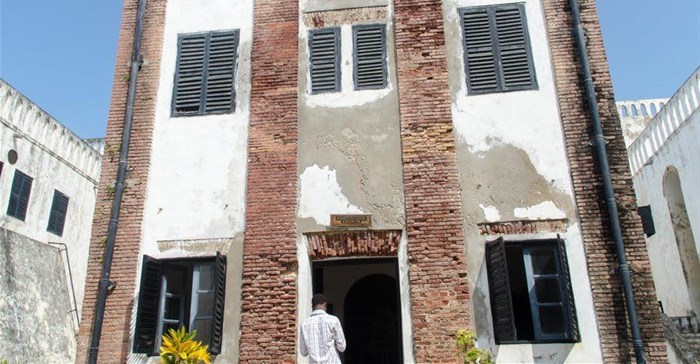A good museum experience pays off for the tourism sector in Ghana

The event reaffirmed Ghana’s prominence in heritage tourism and the importance of tourism to its economy.
The sector is one of the main socio-economic drivers of Ghana’s foreign income and job creation. It also stimulates the growth of other industries. Tourism contributed 6.2% of Ghana’s GDP in 2017 and is the fourth highest income earner for Ghana after gold, cocoa and oil. In 2017, 1.3 million international tourists visited the country and before the COVID-19 pandemic the sector had high hopes for tourism growth.
The importance of heritage in Ghana’s tourism offerings means that museums are a big part of tourism. I conducted a study to examine tourists’ experiences of the country’s National Museum. I aimed to find out what effect their experiences have on their satisfaction with their museum visit, their loyalty to the venue and their willingness to pay more for a visit. I also wanted to understand how the frequency of a tourist’s visit to the museum influences the relationship between satisfaction and willingness to pay more.
I found that frequency of visits has an influence on willingness to pay more. This research also found that the more often people visit a museum, the more they are willing to pay. This study offers managers of museums some insight into how to attract and satisfy more tourists and the economic benefits this could bring.
Findings
Ghana has several museums across the country. Among them are the National Museum and Museum of Science and Technology in Accra, Volta Regional Museum, Cape Coast Castle Museum, Upper East Regional Museum in Bolgatanga, St George’s Castle (Elmina Castle) Museum, and Fort Apollonia Museum of Nzema Culture and History. In 2018, these museums received thousands of visitors with the Cape Coast and Elmina castles being the most popular.
My research was done at the National Museum, which contains artefacts, cultural objects and Ghanaian artists’ paintings. The National Museum is the largest and oldest museum in Ghana. Built in 1975, it is a leading heritage tourism destination particularly for African-Americans who trace their family roots to Ghana.
During the tourism season of 2019, I engaged with 385 domestic and foreign tourists on site, which represented a 68.8% response rate. The visitors completed questionnaires directly after their experience of the National Museum. Most of the tourists were female (56%) and 30% were aged between 35 and 44. Just over half (52%) were international tourists. About the same percentage (53%) were repeat tourists.
Analysis of the questionnaire responses showed that tourists’ museum experience had a direct impact on satisfaction. In turn, satisfaction influenced loyalty; and loyalty affected willingness to pay more for the experience. Number of visits also had a positive relationship with willingness to pay more.
What it means
The findings support the perception of the government of Ghana and other stakeholders that tourist experience and satisfaction should be cultivated.
The main research problem addressed in this study was the need to consider museum cultural experience as part of the tourism experience. First, the finding confirms that visitors’ experience has a positive effect on tourist satisfaction. This is evidence that visitor expectations were likely to have been met.
Considering that museum experience creates emotional attachments, this finding underscores the importance of preserving cultural heritage at museum destinations. The study showed that tourists’ satisfaction positively influenced loyalty, loyalty positively influenced willingness to pay more and frequency of visits moderates the relationship between satisfaction and willingness to pay more.
The findings are encouraging for Ghana because they suggest that the National Museum of Ghana is adopting international standards to preserve and protect cultural heritage that would attract tourists from all over the world.
In addition, Ghana provides a unique cultural context in which to study the effects of tourist experience, as there are creative art exhibitions and cultural artefacts that attract a large number of tourists to the museums.
The tourists indicated that they were likely to visit the museum repeatedly. This would expose them to different personalities and cultural values, and help build lasting relationships.
This article is republished from The Conversation under a Creative Commons license. Read the original article.![]()
Source: The Conversation Africa

The Conversation Africa is an independent source of news and views from the academic and research community. Its aim is to promote better understanding of current affairs and complex issues, and allow for a better quality of public discourse and conversation.
Go to: https://theconversation.com/africa





















